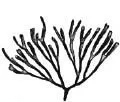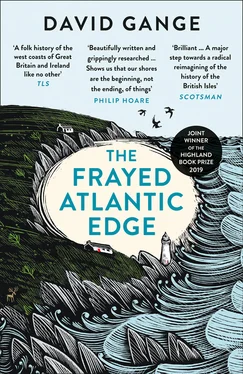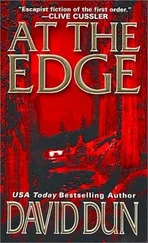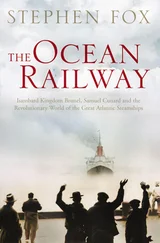I wandered downhill to the village, where small buildings are packed into a narrow isthmus with surprising neatness. This order is a product of the history of habitation. Although Havera had long been lived on (this is probably its first period of abandonment in millennia), the population was increased, and several new crofts built, during a sudden enforced settlement in the eighteenth century when landlords aimed to increase rents from every part of their domain. When the island was abandoned, it wasn’t because of clearance, but was an after-effect of the overpopulation engineered by the lairds. A few Gaelic place names round the coast suggest that some incomers might have been Scots, not Shetlanders; two very different cultures forced together.
The overwhelming impression amid the ruins was of how communal life must have been. Doors and windows of the small neat houses look onto one another, while amenities such as the single village kiln suggest prominent shared spaces (in most of Scotland at this time each croft had a kiln of its own). Inside houses, outlines of two rooms, the but and ben (living room and bedroom), are often clear, although the interiors of some have been converted into well-crafted winter sheep pens. A single habitable house stands on the inland edge of the village. It is used by those who tend the island’s sheep but its occupation seems irregular: a faded chess set and 1990s magazines accompany a toy animal that stares incongruously from a window.
This building shows that the village is not entirely abandoned. But nor is it entirely uninhabited. As I walked around its eastern edge I realised that the honking of fulmars was not just coming from the precipice below, but also from the ruins of crofts: the birds use the village walls as crags. Despite the healthy human population shown in the 1911 census, the last residents left the island in 1923. Jessie Goodlad, born on Havera in 1903, explained why:
Dey left becaas dey wir naeboady left ta geeng back an fore wi da boat … becaas da young menwis aa laevin … weel, dey wirna laevin exactly, dey wir aa gyaain tae da fishin … dey wir naeboady to steer dis boat, dis saily-boat, back an fore. 15
Fulmars spread across Britain’s Atlantic coasts in the early decades of the twentieth century. The first of these birds may well have begun to nest here after the Havera folk had left (there are still retired Shetland fishermen who recall the time they were told, as children, to come and see this strange bird, the maalie ). There is as much social change in nature, and as little permanence, as there is among people. Few events demonstrate this more fully than the sudden and unforeseen expansion of the fulmar across the North Atlantic world; this might even be called the most dramatic conquest of Britain since 1066.
Fulmars are the most characterful of seabirds. They seem to be constantly at play, especially in high winds, and appear to demonstrate an inexhaustible curiosity in humans, quietly approaching any boat at sea. Many photos from the kayak can be filed under ‘Photobombed by Fulmar’. These birds are often written about as though they possess an unflappable mastery of the winds, but much of their personality comes from clumsiness. As they misjudge a gust and lose their poise, a huge webbed foot is thrust into the air; after a split second of feather-ruffling slapstick they’ll be balanced on the breeze again.
The arrival of thousands of fulmars has transformed the experience of Havera from anything its crofters would have recognised. But fulmars are not the only change to the island’s avifauna: the hilltop rigs where crops were grown have also been conquered. These thin strips of rich land were known and named in detail: responsibility for rigs called things like Da Peerie Wirlds, Da Hoolaplanks and Da Kokkiloori was circulated round crofters every season. Now, the space where kale, oats and bere (the traditional four-rowed barley of the Northern Isles) were grown is barely traceable beneath the same foliage that would be there had the island not been farmed. Ruling this feral domain is another victor in the struggles between species: the bonxie . Every rocky vantage, whether a corner of the old schoolhouse or a chunk detached from a long-flattened dyke, is now a watchtower for a bulky skua.
This two-century legacy of change is a profound demonstration of the entanglement of human and natural worlds. The Havera way of life was transformed – ended – not only by the ill-judged whims of distant landlords but by the movement of fish offshore, while many differences between Havera today and in the past are a result of the changing social lives – the histories – of birds. At the end of my Shetland journey, I spent a night in the shadow of the Havera windmill’s twin, the fourth-century Broch of Mousa. This is a domineering monument to human belligerence, yet now its walls reverberate with the gentlest purring. Storm petrels nest in the cracks between stones, and as I settled down to sleep, hundreds of tiny stormies fluttered across my sight line. Masons making ready for war had unwittingly built the perfect hive for these sparrow-sized seafarers.
It is tragic to see abandoned places that were once filled with people, especially when (as in the case of Havera) their magnetic personalities – their pleasures and regrets – shine through recordings of their voices. Yet in a world where humans wage wars of conquest not just among themselves but on almost every species on the planet, it might be heartening to see the agency of animals reshaping realms to which humans are, more than ever, peripheral.

At about 3 a.m. on my night on Havera, heavy rain set in. As I paddled south, soaked to the bone and (for the first time in this journey) truly cold, the windmill remained on my horizon, only briefly hidden by the heaviest downpours. Both the red cliffs of the north and the fertile, low-lying isles were now left behind. A diverse geology, including complex whorls of multiple rocks, had taken over. Drongs were no longer the square-edged towers of St Magnus Bay, but rugged grey wedges like spittle-wreathed teeth. Few mishaps had occurred so far, but I’d now misjudged the battery level of my phone and was left unable to check tides and weather. I knew such accidents would happen quite often, but with the tidal challenges that lay ahead, this was not a time I would have chosen. Momentarily I thought there was a virtue to this failing: that it made my journey more ‘authentic’ (not a word I’d ever usually trust). But I quickly realised that every seafarer of the pre-digital age had resources to judge tides that I lacked. I had some familiarity with what to expect, built up over the last two weeks (I knew, for instance, to expect ebb tides in the afternoon) and I also had time: if I confronted hostile tides or weather I could, in theory, sit them out and consume the ample food and reading still stowed in my boat.
The sky began to clear as I passed St Ninian’s Isle, linked to the mainland by its tombolo beach. This pretty strand of sand, lapped gently by the sea on either side, is perhaps the most famous landmark in Shetland. Like many of Shetland’s spits and bars, it indicates an alarming reality: a drowned coastline that has not stopped sinking. Shetland may have sunk as much as nine metres in 5,000 years, in contrast to most Scottish coasts that follow a more usual post-glacial path of continuing ascent (‘isostatic rebound’ once freed from the weight of their Ice Age glaciers). The scale of this change, over so short a time, explains some of the extraordinary transitoriness of this coastline. This would be driven home even more strongly as I continued towards the final tidal barriers in my path.
Читать дальше













